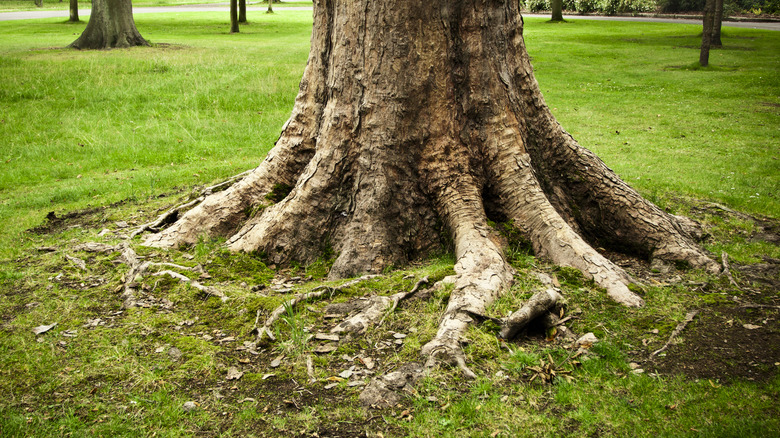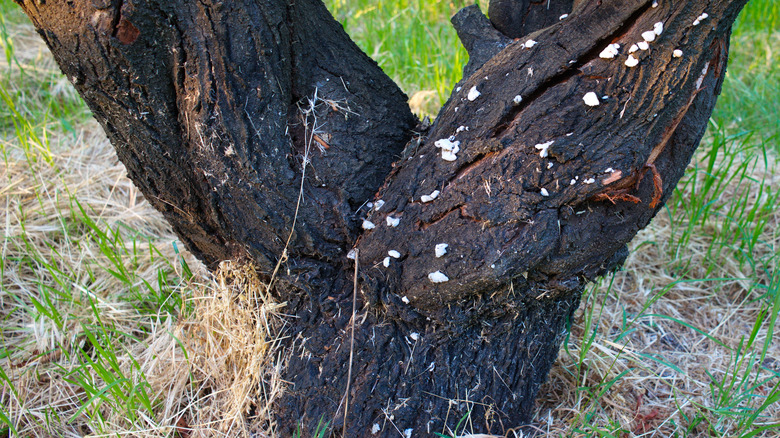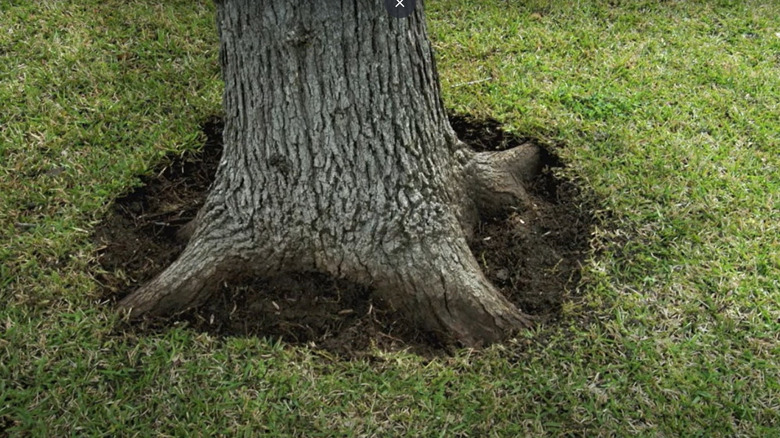What Tree Root Flare Says About The Health Of Your Tree
Growing lush, healthy trees is not easy. Gardeners often have difficulty determining the causes behind yellowing foliage, fungal diseases, pest infestations, and other tree concerns. However, one factor that usually gets overlooked is the health of the root flare. Also known as a root collar, a root flare is the transitional section where the trunk begins to broaden and opens out to roots. While fairly common in forests, this phenomenon is mostly unheard of for trees planted in pots or gardens, which can be vastly concerning.
For trees to access all the necessary water resources and nutrients, their trunk flares must remain visible and healthy. Planting trees way too deep and, in turn, covering their root flares prevents the proper establishment of their root system, which destabilizes their structure and makes them prone to uprooting and falling over. Moreover, it inhibits their oxygen supply, severely damaging the tree. It also damages the phloem, which is underground tissue that transfers food and nutrients in its structure, resulting in the tree's eventual death.
Implications of a covered root flare
As long as the root flare is at the surface level, you can rest assured that your tree is growing healthily. But if your tree's roots are completely hidden, giving it a pole-like appearance, it can spell major issues down the line, including leaf discoloration and crown dieback. While the root flare connects the trunk to the roots, it retains bark-like characteristics. This means it must be exposed to air to ensure adequate oxygen exchange.
But deep underground flare burial exposes it to excessive moisture, which worsens further for trees covered in layers of mulch and soil that absorb even more water. This aggravates the pre-existing tree wounds and causes root decay by increasing their susceptibility to diseases like Phytophthora, which is a type of mold, and Armillaria, which is a long-living fungu. Another issue with covered tree flares is the growth of girdled roots, as the soil coverage causes roots to circle the buried trunk tissue. Such roots restrict the tree's growth, causing it to die prematurely. It's more common in blue spruce, red maple, and white pine trees. It may also occur in container-grown trees whose roots lack adequate spreading space.
How to uncover the root flare
Root crowns primarily remain invisible due to incorrect planting depth. For instance, nursery-bought trees are usually planted deep for better anchorage in their containers, but this threatens their long-term vitality and survival. In such cases, these trees should be transplanted while ensuring the root flare is uncovered. However, despite being appropriately planted, the more established trees may suffer due to the pile-up of mulch, dirt, and landscaping fabric covering their flares. While replanting big trees may not be an option, you can take steps to remove the topsoil.
Start by shoveling the dirt and excavating excessive soil and mulch around the trunk till you uncover the tapering tree section where it meets the anchoring roots. Next, remove any circling, adventitious, or girdling roots that may restrict your tree's growth while retaining spoke wheel-shaped roots. You can build an embankment around the just-uncovered root flare to prevent dust build-up or simply apply mulch at a distance of 3 to 6 inches from the trunk.


